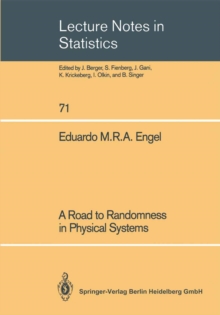
Weak Dependence: With Examples and Applications PDF
by Jerome Dedecker, Paul Doukhan, Gabriel Lang, Jose Rafael Leon, Sana Louhichi, Clementine Prieur
Part of the Lecture Notes in Statistics series
Description
Time series and random ?elds are main topics in modern statistical techniques.
They are essential for applications where randomness plays an important role.
Indeed, physical constraints mean that serious modelling cannot be done - ing only independent sequences.
This is a real problem because asymptotic properties are not always known in this case.
Thepresentworkisdevotedtoprovidingaframeworkforthecommonlyused time series.
In order to validate the main statistics, one needs rigorous limit theorems.
In the ?eld of probability theory, asymptotic behavior of sums may or may not be analogous to those of independent sequences.
We are involved with this ?rst case in this book. Very sharp results have been proved for mixing processes, a notion int- duced by Murray Rosenblatt [166].
Extensive discussions of this topic may be found in his Dependence in Probability and Statistics (a monograph published by Birkhau *ser in 1986) and in Doukhan (1994) [61], and the sharpest results may be found in Rio (2000)[161].
However, a counterexample of a really simple non-mixing process was exhibited by Andrews (1984) [2].
The notion of weak dependence discussed here takes real account of the available models, which are discussed extensively.
Our idea is that robustness of the limit theorems with respect to the model should be taken into account.
In real applications, nobody may assert, for example, the existence of a density for the inputs in a certain model, while such assumptions are always needed when dealing with mixing concepts.
Information
-
Download - Immediately Available
- Format:PDF
- Publisher:Springer New York
- Publication Date:29/07/2007
- Category:
- ISBN:9780387699523
Other Formats
- Paperback / softback from £81.69
Information
-
Download - Immediately Available
- Format:PDF
- Publisher:Springer New York
- Publication Date:29/07/2007
- Category:
- ISBN:9780387699523










